Introduction
The evolution of API documentation has been marked by significant milestones, notably the transition from Swagger to OpenAPI. Initially developed by Tony Tam at Wordnik, Swagger quickly became a pivotal standard for APIs. Its ability to articulate clear methods and data formats made it indispensable in the world of software development.
In 2015, Swagger's specification was donated to the Linux Foundation and rebranded as the OpenAPI Specification, further solidifying its position. With the rise of microservices and large-scale IT products, the need for clear, standardized API documentation is paramount. GitHub, recognizing the importance of well-documented APIs, anchors its documentation approach in providing an exceptional user experience for developers.
Recent developments in the software industry emphasize the ongoing relevance of API documentation, highlighting that it is more than just a formality. As API development promotes modularity, reusability, and innovation, the shift from Swagger to OpenAPI represents a commitment to evolving and improving how we interact with the digital world.
History of OpenAPI and Swagger
The evolution of API documentation has been marked by significant milestones, notably the transition from Swagger to OpenAPI. Initially developed by Tony Tam at Wordnik, Swagger was introduced in 2011 as an open-source project and quickly became a pivotal standard for APIs. Its ability to articulate clear methods and data formats for tasks like reading and writing data or requesting services from another application made it indispensable.
As APIs became the linchpin of software development, ensuring robust ecosystems, Swagger's influence expanded. In 2015, in a move to further solidify its position and encourage standardization, Swagger's specification was generously donated to the Linux Foundation and rebranded as the OpenAPI Specification.
In the world of microservices and large-scale IT products, especially in the realms of logistics and e-commerce, the need for clear, standardized API documentation is paramount. The microservice architecture, where each feature is encapsulated into its own service, for instance, handling specific logistics processes, underscores the necessity for a well-structured API documentation. GitHub, the largest developer platform, anchors its documentation approach in providing an exceptional user experience for developers, recognizing that well-documented APIs spur innovation and automation, fostering a fertile ground for external partners and internal teams to thrive.
Recent news and developments in the software industry continue to highlight the importance of API documentation. Docker's advancements in development tools, Upbound's control plane management, and security concerns raised by the OpenSSF illustrate the ongoing relevance of APIs. These narratives emphasize that API documentation isn't just a formality; it's a vital tool for developers to understand and harness the capabilities of software.
As API development promotes modularity, reusability, and innovation, the shift from Swagger to OpenAPI represents more than a name change—it signifies a commitment to evolving and improving how we interact with the digital world.
OpenAPI Specification vs. Swagger Tools
The OpenAPI Specification (OAS) defines a standard, language-agnostic interface to RESTful APIs which allows both humans and computers to discover and understand the capabilities of the service without access to source code, documentation, or through network traffic inspection. When properly defined via OpenAPI, a consumer can understand and interact with the remote service with a minimal amount of implementation logic. An OpenAPI definition can then be used by documentation generation tools to display the API, code generation tools to generate servers and clients in various programming languages, testing tools, and many other use cases.
Swagger, now known as the Swagger Suite, is a set of tools that implement the OpenAPI Specification. The Swagger tools, which include Swagger Editor, Swagger UI, and Swagger Codegen among others, help developers design, build, document, and consume RESTful web services. They offer a range of capabilities from generating interactive API documentation to building SDKs for various programming languages.
Understanding the distinction between OpenAPI and Swagger is crucial for developers working in modern web development environments where efficient data fetching and interaction with microservices are key. Tools like Swagger facilitate these processes by providing a visual representation of an API's structure, making it easier for developers to craft and debug their APIs. For instance, in a logistics application, where microservices might handle specific functions such as warehousing, being able to visualize API interactions can significantly enhance the development process.
Adopting an API-first design approach, as advocated by experts in the field, organizations can foster a product mindset that puts the goals, journey, and experience of the API user - the developers - at the forefront. This not only allows for greater versatility and control over digital products but also enables emergent use cases through collaborations with external partners and contributors.
In the broader context, APIs are increasingly recognized as the backbone of software development, playing a critical role in how applications communicate and exchange data. The emergence of API tools has grown in parallel, offering developers a variety of options to meet their specific needs. An API that is well-documented and based on a clear specification can greatly improve the developer experience, resulting in more reliable and efficient software systems.
Similarities Between OpenAPI and Swagger
OpenAPI and Swagger are two key players in the API documentation arena, both offering essential features to streamline the developer experience. While they serve similar purposes, it's their approach to documenting APIs in a machine-readable format that stands out, promoting seamless integration and consumption. They both accommodate JSON and YAML, providing developers with the flexibility to work in the format of choice.
A distinguishing feature is the interactive documentation capabilities, which empower users to engage with and test APIs directly, fostering a deeper understanding and efficient utilization of the API's functionalities.
Refinement of API documentation is critical, as evidenced by a shift towards more descriptive operation details. Instead of a basic 'GET /users', enhanced documentation now elucidates the operation's intent, parameters, and expected responses. This clarity not only enriches the developer's comprehension but also curtails support costs by reducing ambiguity and potential misinterpretations.
Recent trends underscore the evolution of software development tools, such as Docker's enhancement of container technology and Upbound's introduction of Spaces for improved cloud control plane management. In line with these advancements, OpenAPI and Swagger's roles in API documentation continue to be pivotal, ensuring developers have the necessary tools to design, document, and deploy APIs effectively.
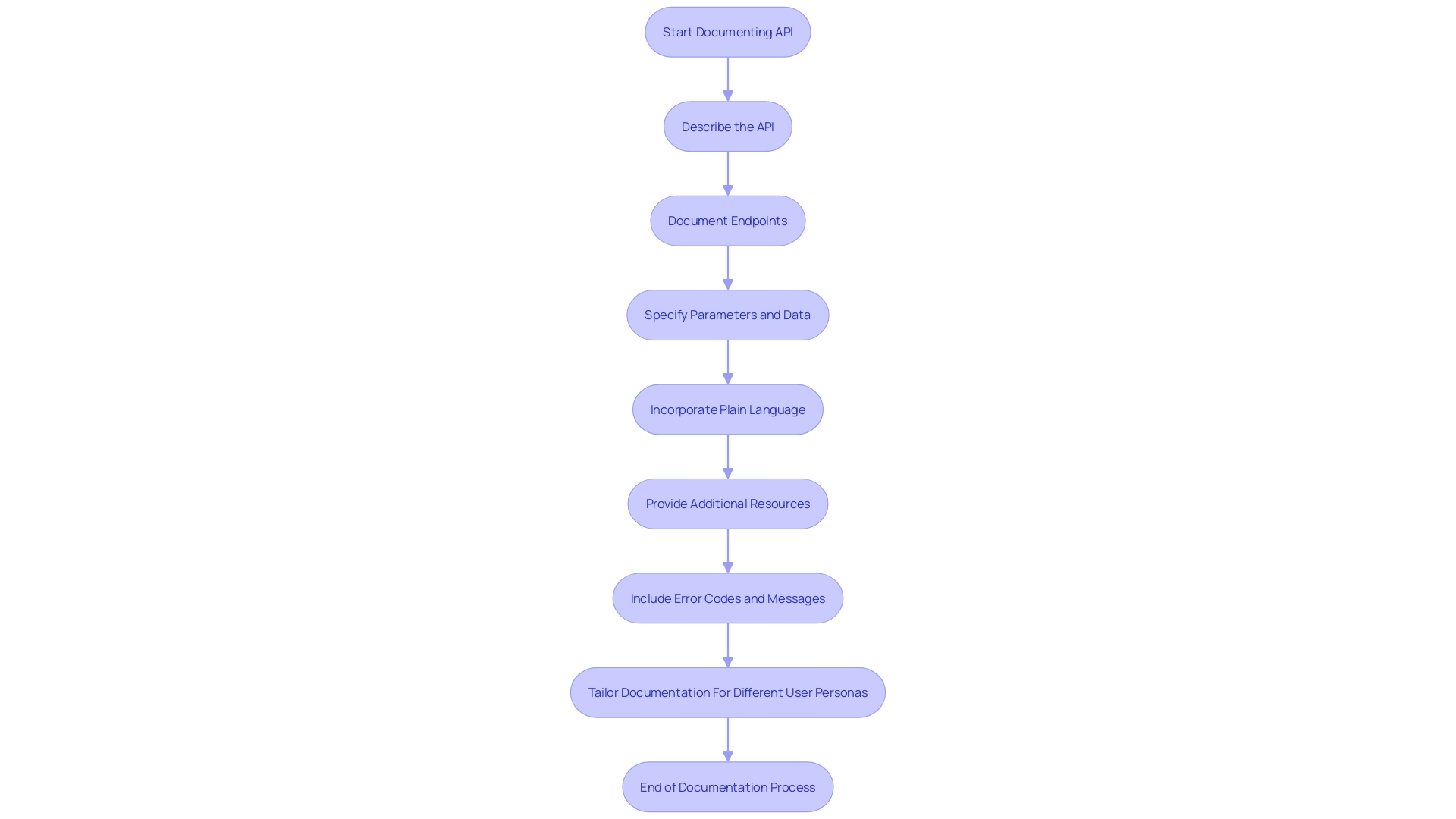
Key Differences Between OpenAPI 3.0 and Swagger 2.0
The evolution from Swagger 2.0 to OpenAPI 3.0 marks a significant leap in API design and documentation. OpenAPI 3.0, a global standard for RESTful APIs, transcends its predecessor by introducing a host of enhancements that cater to the needs of developers and the systems they build. It elevates the API documentation process with features like reusable components, which streamline the developer experience by promoting modularity and reducing redundancy.
The security definitions in OpenAPI 3.0 are more robust, offering better mechanisms to safeguard API endpoints. Furthermore, it boasts more precise validation rules, ensuring that APIs are used correctly and effectively.
While Swagger 2.0 set the stage for a language-agnostic approach to API specifications, allowing both humans and machines to comprehend service capabilities without delving into the source code, OpenAPI 3.0 refines this concept. It acknowledges the significance of APIs in a digitally interconnected world, where they serve as vital conduits for application interaction. By focusing on the user journey and experience of the developer, OpenAPI 3.0 aligns with the API-first philosophy, which views web APIs as products and emphasizes their strategic role in digital product versatility.
GitHub's transition to a dynamic documentation platform at docs.github.com showcases a real-world application of these principles. The integration of JSON to drive content and intercommunication within the platform underscores the importance of data-driven documentation. By leveraging OpenAPI 3.0's capabilities, platforms like GitHub can offer more programmable interfaces, enabling automation and paving the way for emergent use cases across an ecosystem of developers.
Although Swagger 2.0 remains in use, the advancements of OpenAPI 3.0 are clear, echoing the sentiments of industry experts who emphasize the need for APIs that not only facilitate data exchange but do so with unmatched reliability, efficiency, and scalability. As we venture further into the realm of API development, the intricate craftsmanship of APIs becomes increasingly critical, with OpenAPI 3.0 at the forefront of this technical precision.
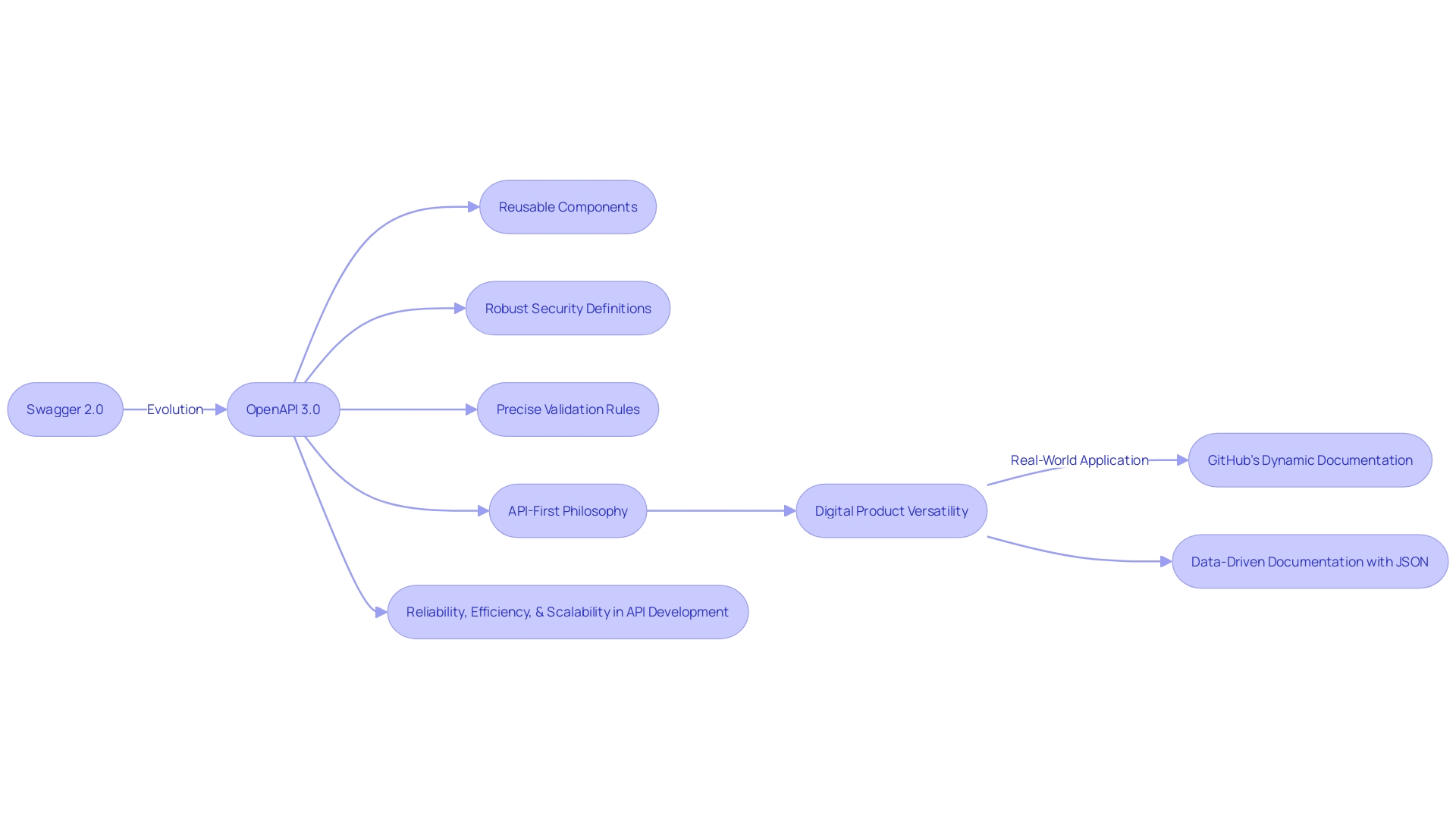
Use Cases and Applications
OpenAPI Specification and Swagger are transformative tools in API development, providing a universal language to describe RESTful APIs. OpenAPI, once known as Swagger Specification, is a globally recognized framework that simplifies API documentation, design, and construction. It empowers developers to represent APIs in a format that is not only easy to comprehend but also facilitates maintenance and scalability.
Swagger offers a suite of open-source tools that support the entire lifecycle of API development. From design and documentation to testing and integration, Swagger ensures that APIs are understandable by both humans and machines, without delving into the source code. The visual representation Swagger provides is invaluable for developers to conceptualize and troubleshoot their API structures.
Moreover, embracing OpenAPI and Swagger aligns with industry best practices, echoing the sentiment of experts like J. Vester, who advocates for focusing on delivering value through core features while leveraging existing frameworks for other needs. This approach streamlines development and allows for the efficient utilization of time and resources. By integrating OpenAPI and Swagger, developers can generate client libraries and server stubs, enhancing the API's utility and easing the process of integration with other services.
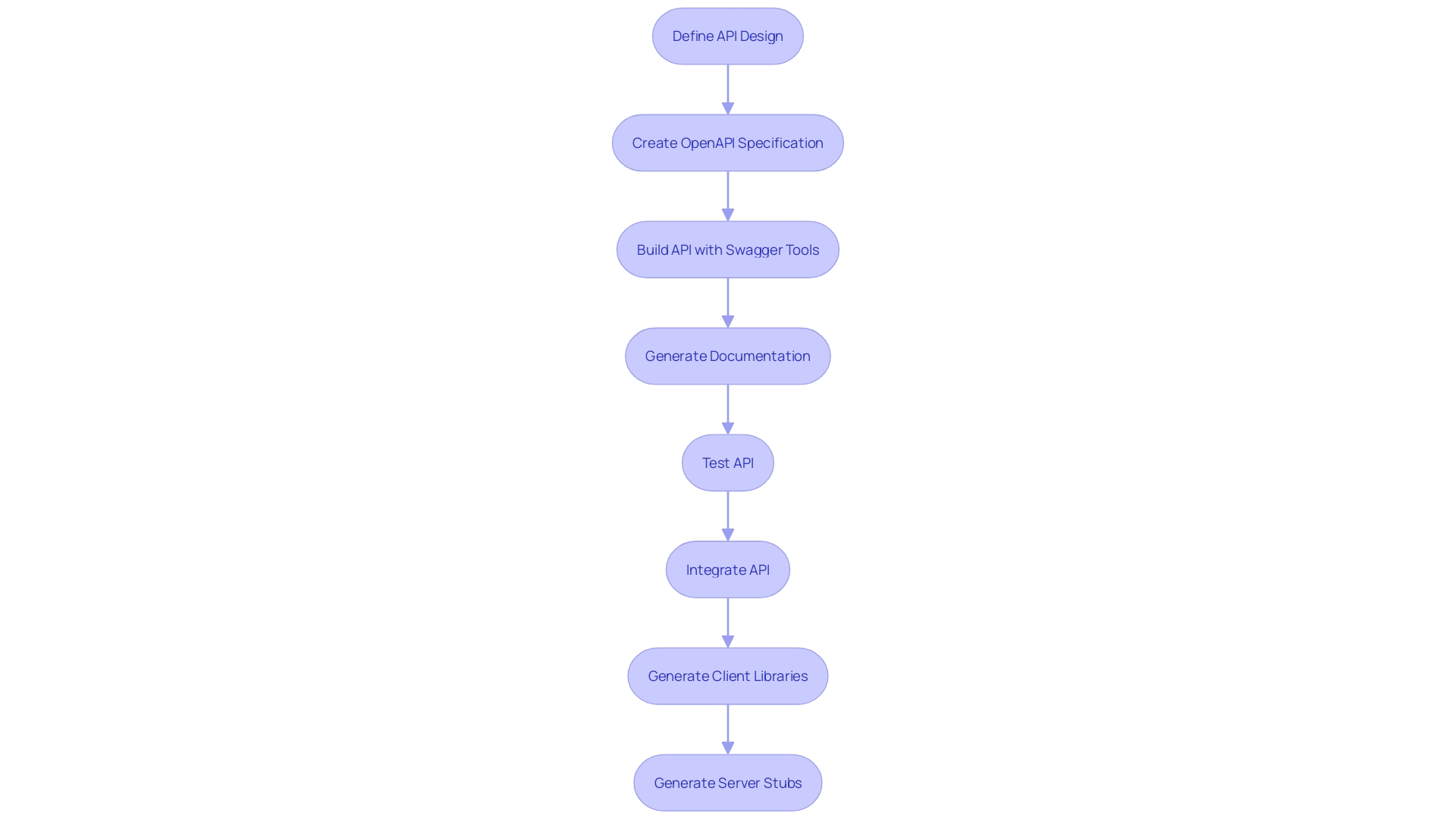
Importance of Documentation and Implementation
Quality API documentation is vital for developer adoption and the effective use of APIs. Tools like Swagger and the OpenAPI Specification provide a systematic approach to creating and maintaining clear, understandable documentation. They outline an API's functions, parameters, and responses, which streamlines integration and accelerates development.
Consider GitHub's transformation of its documentation. By incorporating data-driven techniques and JSON, GitHub enhanced its documentation's functionality and user experience. This significant investment demonstrates the impact that well-structured API documentation can have.
Swagger offers a visual representation of APIs, aiding developers in spotting issues and understanding the API's structure. OpenAPI, renowned as the global standard, simplifies API design and documentation, making APIs more accessible for maintenance and development.
Good documentation should quickly inform users how to begin interacting with an API, as highlighted by experts in the field. It must be up-to-date, provide clear step-by-step instructions, and cater to different user personas. As APIs continue to underpin modern software, the importance of robust documentation cannot be overstated, with Google acknowledging APIs as the 'crown jewel of software development.'
APIs empower developers to build complex applications and foster innovation through collaboration. Therefore, adopting tools like Swagger and OpenAPI is a strategic move for any organization seeking to improve its API documentation and, by extension, its developer experience and software quality.
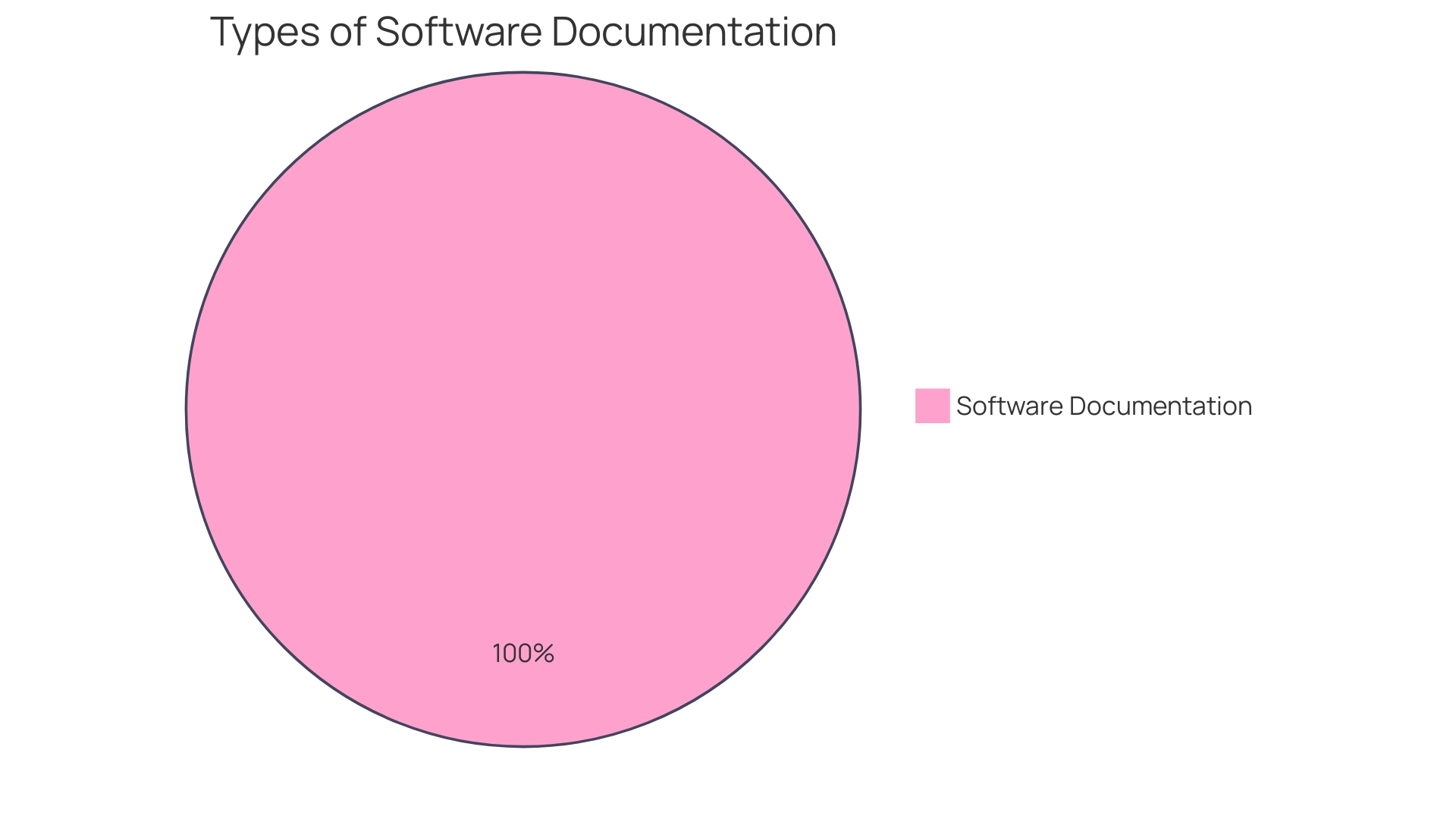
Community and Support
The OpenAPI Specification garners support from the OpenAPI Initiative, a collective of industry forerunners, ensuring its continuous evolution. Although Swagger has been subsumed under OpenAPI, its community remains vibrant, offering forums, documentation, and open-source project support. Such robust community engagement is pivotal, especially considering insights from industry expert J. Vester, who advocates for leveraging existing frameworks to extend the value of one's intellectual property, rather than reinventing the wheel.
Similarly, developer communities are integral to a startup's growth, providing critical product feedback and fostering innovation. The significance of these communities is underscored by findings from Vanson Bourne's research, which reveals that 93% of organizations consider APIs crucial, and 97% see a symbiosis between APIs and microservices. This collaborative spirit is echoed by companies such as SmartBear and Microsoft, who champion active peer-to-peer engagement, reflecting the role of community in driving technology forward and contributing to a better world.
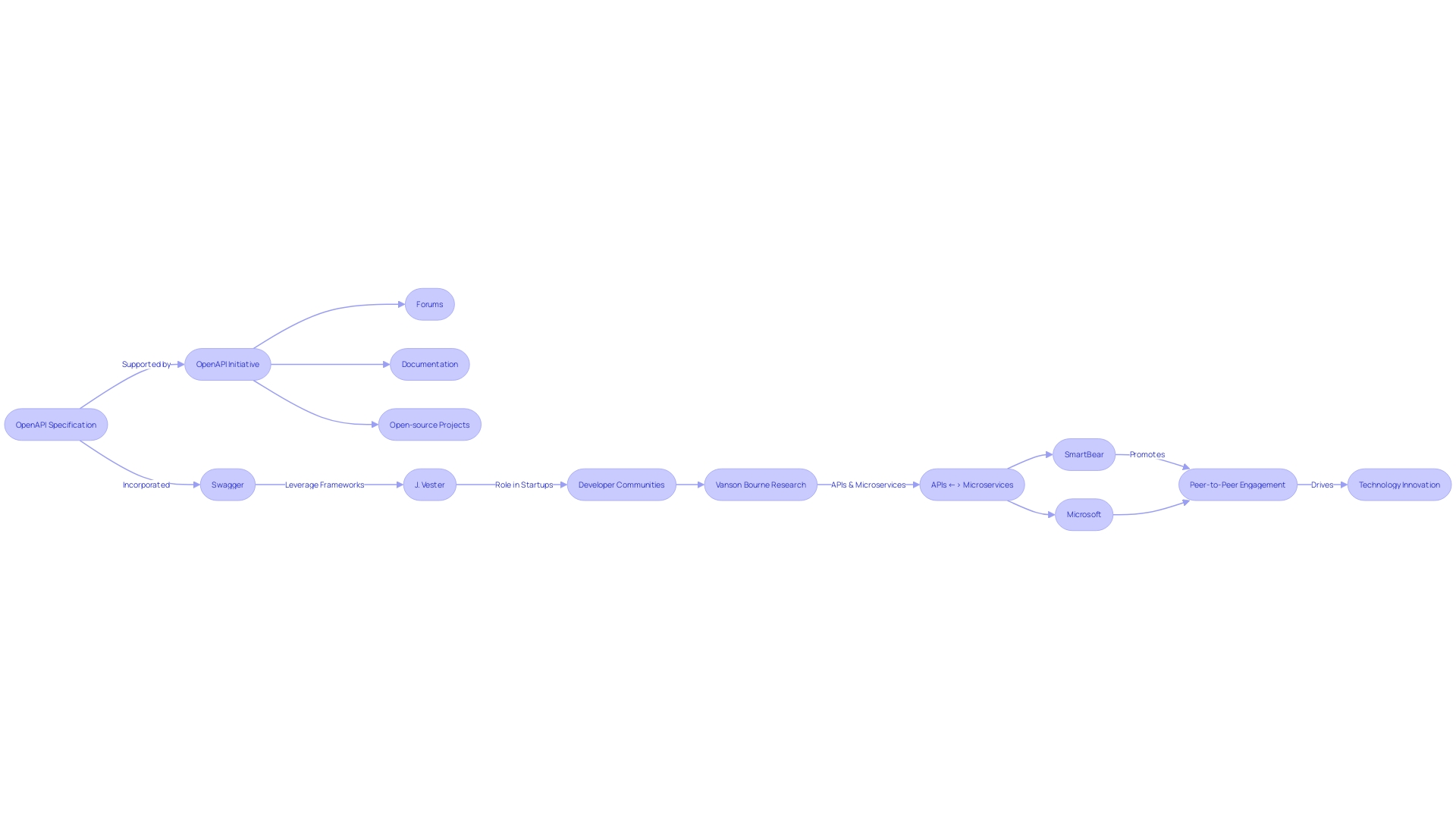
Conclusion
In conclusion, the transition from Swagger to OpenAPI represents a commitment to evolving and improving how we interact with the digital world. OpenAPI and Swagger streamline the developer experience, simplify API documentation, and empower developers to build complex applications.
With the rise of microservices and large-scale IT products, standardized API documentation is paramount. GitHub recognizes this importance and prioritizes an exceptional user experience for developers.
OpenAPI and Swagger offer interactive documentation capabilities, accommodating JSON and YAML for flexibility. They empower users to engage with and test APIs directly, enhancing understanding and utilization.
The evolution from Swagger 2.0 to OpenAPI 3.0 marks a significant leap in API design and documentation. OpenAPI 3.0 introduces features like reusable components, robust security definitions, and precise validation rules. It aligns with the API-first philosophy, acknowledging the significance of APIs in a digitally interconnected world.
Quality API documentation is vital for developer adoption and effective API use. Tools like Swagger and the OpenAPI Specification provide a systematic approach to creating and maintaining clear, understandable documentation. Good documentation quickly informs users how to interact with an API, is up-to-date, and caters to different user personas.
The OpenAPI Specification, supported by the OpenAPI Initiative, ensures continuous evolution. Although Swagger is now part of OpenAPI, its community remains vibrant, offering support through forums and open-source projects.
In conclusion, the transition from Swagger to OpenAPI signifies a commitment to improving API interactions. OpenAPI and Swagger enhance the developer experience, simplify API documentation, and empower developers to build efficient software systems. Embracing these tools allows organizations to enhance their API documentation, improve developer experience, and deliver reliable and efficient applications.
Upgrade your API documentation and enhance developer experience with Kodezi's powerful tools.
Frequently Asked Questions
What is Swagger?
Swagger was an open-source project introduced in 2011 by Tony Tam at Wordnik that became a pivotal standard for APIs, allowing clear methods and data formats for tasks like reading and writing data or requesting services from another application.
What is the OpenAPI Specification (OAS)?
The OpenAPI Specification is a standard, language-agnostic interface to RESTful APIs which allows both humans and computers to discover and understand the capabilities of a service without access to source code, documentation, or through network traffic inspection.
How did Swagger transition to OpenAPI?
In 2015, Swagger's specification was donated to the Linux Foundation and rebranded as the OpenAPI Specification to encourage standardization and solidify its position as a key standard for APIs.
What are some of the Swagger tools available?
The Swagger tools, now known as the Swagger Suite, include Swagger Editor, Swagger UI, and Swagger Codegen among others. They help developers design, build, document, and consume RESTful web services.
What is the difference between OpenAPI and Swagger tools?
OpenAPI refers to the specification itself, while Swagger tools are a set of implementations that support the OpenAPI Specification for various tasks such as documentation generation, code generation, and testing.
Can you provide examples of how OpenAPI and Swagger are used in the industry?
Both are used to document APIs in a machine-readable format, facilitating integration and consumption. For instance, GitHub uses OpenAPI for its documentation approach, and Docker uses Swagger tools to enhance development tools.
What are the key enhancements from Swagger 2.0 to OpenAPI 3.0?
OpenAPI 3.0 introduced reusable components, robust security definitions, and more precise validation rules. It focuses on the user journey and developer experience, aligning with an API-first philosophy.
What role do OpenAPI and Swagger play in API development?
They provide a universal language to describe RESTful APIs which simplifies API documentation, design, and construction, allowing for an API's easy comprehension, maintenance, and scalability.
Why is API documentation important?
Quality API documentation is essential for developer adoption and effective use of APIs, outlining an API's functions, parameters, and responses, which streamlines integration and accelerates development.
How does the community contribute to the OpenAPI Specification?
The OpenAPI Initiative, a collective of industry forerunners, supports the OpenAPI Specification, while the vibrant Swagger community offers forums, documentation, and open-source project support. This engagement is essential for the continuous evolution of the specifications and tools.




